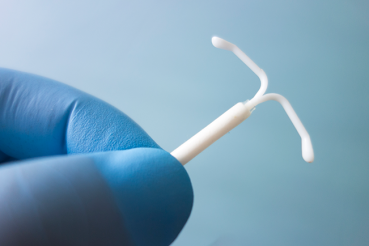A small but inconvenient leak when you laugh or sneeze. An unfortunate accident because you couldn't get to the bathroom in time. These scenarios describe one common condition: urinary incontinence, or loss of bladder control.
Urinary incontinence doesn't usually happen overnight. "It tends to creep up slowly," says Anne Sammarco, MD, MPH, a urogynecologist at Rush. "You might leak a little bit once a year. Then it's twice a year. Then once a month. Before you know it, it's a daily occurrence."
This might be one of the reasons people don't go usually the doctor right away. "When something happens gradually, we learn how to deal with it" Sammarco explains.
Another reason, of course, is that many of us are shy about discussing the topic. It can feel embarrassing and — because so few people talk about it — isolating. But if you're dealing with urinary incontinence, you’re far from alone.
More than four out of 10 people experience some form of urinary incontinence after the age of 65. And many people, especially women, experience it earlier.
Urinary incontinence causes
Urinary incontinence can occur for a variety of reasons, including the following:
- Weakened pelvic muscles as a result of childbirth
- Miscommunication between the brain and bladder (common with neurological disorders, such as stroke, Parkinson's disease and multiple sclerosis)
- An enlarged prostate gland or a prostate gland affected by surgery
- Cancerous or noncancerous growths in the bladder
- Thinning and drying of the skin in the vagina and urethra (the tube that carries urine out of the body), which can occur during menopause
- Urinary tract infections
- Lifestyle issues that may aggravate the bladder, such as drinking too much water, consuming caffeine and eating spicy foods
Urinary incontinence symptoms worth bringing up
Many effective treatments are available, so it's worth talking with a doctor as soon as you experience any symptoms of urinary incontinence:
- If you have stress incontinence, you may notice that you leak after laughing, coughing, lifting something or moving in a certain way.
- Urge incontinence is simply inability to make it to the bathroom in time. Assistive devices or difficulty moving can make this problem more frequent — or even cause it — because they lengthen the time it takes to get to the bathroom.
- Mixed incontinence is a combination of stress incontinence and urge incontinence.
Diagnosing urinary incontinence
No matter which type you have, or how advanced it is, there’s likely a treatment that can help
Before determining a treatment plan, doctors must find the problem's source by performing a thorough physical exam. This can include the following:
- Obtaining a thorough medical history
- Testing your urine
- Determining if the bladder empties completely
- Using a cystoscope, a tube with a small camera, to get a closer look at the bladder
- Measuring bladder pressure with a test known as urodynamics
Some people don't go to the doctor because they are embarrassed or they assume surgery is their only option, but this condition is very common and there are many ways to treat it.
Customizing a treatment approach to urinary incontinence
Once the doctor identifies the type and cause of incontinence, they can work with you to find the best treatment approach.
Here are some common approaches used by doctors at Rush:
- Lifestyle changes such as drinking less liquid or avoiding liquids that irritate the bladder (for example, those containing caffeine and alcohol)
- Timed voiding, in which patients use the clock, rather than a signal from their bodies, to tell them when to urinate
- Pelvic floor muscle exercises, called Kegel exercises, which can be learned with the aid of a pelvic floor physical therapist
- A pessary, or silicone ring that fits inside the vagina and supports the urethra
- Electrical stimulation procedures to prevent the bladder from contracting too frequently
- Medications to relax the bladder
- Injection of materials to bulk up the area around the urethra to keep the sphincter muscles closed and stop urine from leaking
- Slings surgically inserted around the urethra to help support it during activities like coughing, laughing and sneezing
- Artificial sphincters (devices commonly used in men following prostate cancer treatment or because of enlarged prostate glands) fit around the neck of the bladder, keeping the urinary sphincter shut tight until it’s time to urinate, when patients push a button located under the skin
Whatever the cause of incontinence, though, it's important to know that you are not alone and there are options.




